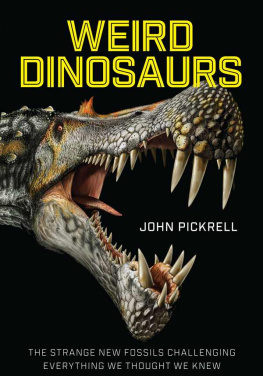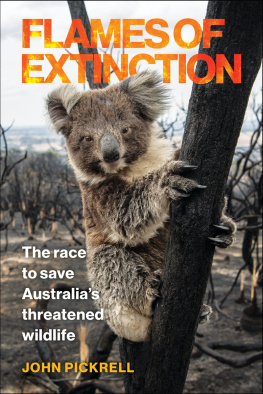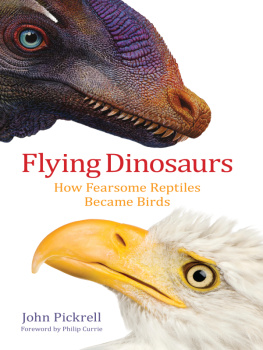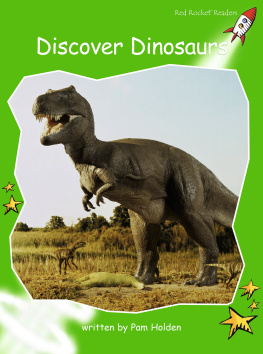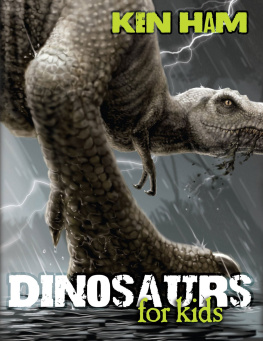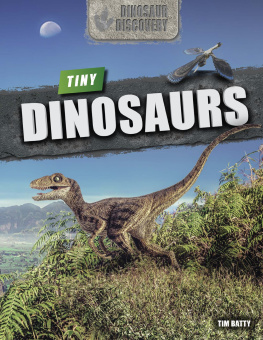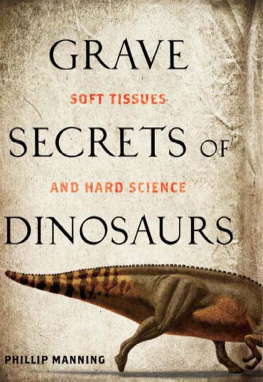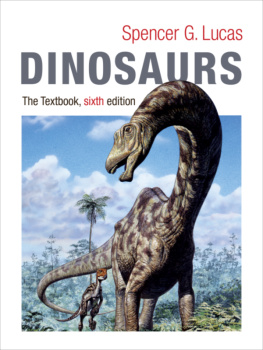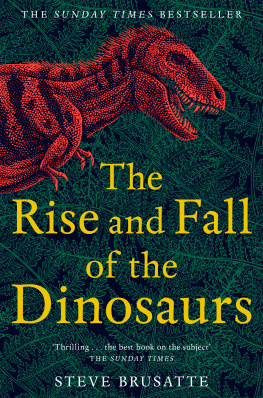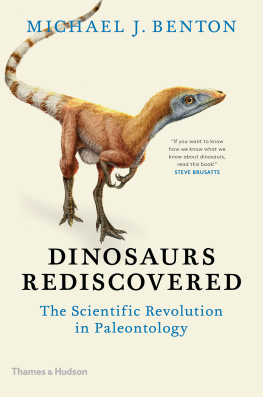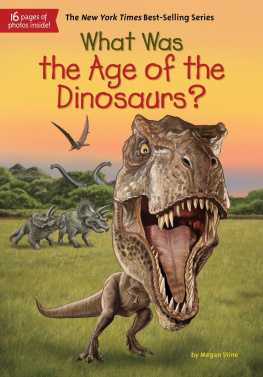THE STRANGE NEW FOSSILS CHALLENGING EVERYTHING WE THOUGHT WE KNEW
JOHN PICKRELL
Columbia University Press
New York
Columbia University Press
Publishers Since 1893
New York Chichester, West Sussex
cup.columbia.edu
First published in Austrailia by NewSouth, an imprint of UNSW Press Ltd.
Copyright 2016 John Pickrell
All rights reserved
E-ISBN 978-0-231-54339-2
Library of Congress Cataloging-in-Publication Data
Names: Pickrell, John.
Title: Weird dinosaurs / John Pickrell.
Description: New York : Columbia University Press, [2017] | Originally published in Australia by University of New South Wales Press, 2016. | Includes bibliographical references and index.
Identifiers: LCCN 2016057392 (print) | LCCN 2016059780 (ebook) | ISBN 9780231180986 (cloth : alk. paper) | ISBN 9780231543392 (e-book : alk. paper) | ISBN 9780231543392 (e-book)
Subjects: LCSH: Dinosaurs. | Animals, Fossil. | Paleontology. | Paleontological excavations.
Classification: LCC QE861.4 .P53 2017 (print) | LCC QE861.4 (ebook) | DDC 567.9--dc23
LC record available at https://lccn.loc.gov/2016057392
A Columbia University Press E-book.
CUP would be pleased to hear about your reading experience with this e-book at .
Book design Jo Pajor-Markus
Cover design Xou Creative
Cover images FRONT : Spinosaurus, Davide Bonadonna BACK : Top Yi qi, Emily Willoughby Bottom Regaliceratops, Royal Tyrrell Museum of Paleontology/Julius Csotonyi
For my mother, who encouraged my passion for natural history .
CONTENTS
The Sahara, Egypt
Hebei Province, China
Transylvania, Romania
Alberta, Canada
Gobi Desert, Mongolia
Siberia, Russia
Alaska, United States
Lightning Ridge, Australia
Patagonia, Argentina
Mahajanga Basin, Madagascar
Transantarctic Mountains, Antarctica
As a kid growing up in eastern Canada in the 1950s, I was proud of the fact that I knew every dinosaur name that I ever found in a book. And I thought that after more than a century of research on dinosaurs we must have known most of the dinosaurs that had ever lived. Fortunately for my future career choice, I was proved wrong about that.
Today, I am amazed that there are still children who can recite great lists of dinosaur names even new names with complex pronunciations from China and other countries. The difference is that today they have perhaps ten times as many names to learn, and the rules for naming them are much less straightforward. Furthermore, we now realise that our knowledge of dinosaur diversity is but a small fraction of what it must have been during the Mesozoic Era.
As an example, one of the richest known dinosaur sites in the world is Dinosaur Provincial Park in Alberta, Canada. The rocks are Cretaceous in age, and represent a coastal floodplain spanning a narrow window of time that covers less than 5 million years. More than 45 dinosaur species have been identified from here and even after a century of intensive field research, new species are continuing to be identified. That in itself is remarkable. But when you consider that it has about 4 per cent of the worlds known dinosaur species, then you start to realise how very little we know about dinosaurs in most parts of the world.
Dinosaur Provincial Park is just one site representing a single complex of environments that covers less than 3 per cent of the time frame over which dinosaurs existed. Excluding their bird descendants, dinosaurs dominated the world for almost 150 million years, and it is doubtful that any single species was in existence for more than a few million years. They occupied every corner of the world and, like modern animals, different species would have been adapted to live in specific environments. Now if every environment and time period had as many dinosaur species as Dinosaur Provincial Park, then it is evident that there must have been tens of thousands of species that are not known.
In fact, one of the reasons so many new dinosaurs are being discovered these days is that scientists can identify the relative ages and ancient environments of rocks in different parts of the world. If our present knowledge of the dinosaurs from that time period, geographic area and/or environment is poor, then we can maximise our chances of finding a new species by going there to hunt for their remains. And this is just what people have been doing in recent years, in locations from China and Australia to Madagascar and Alaska.
There is of course a lot more involved. For example, not every rock type or site has the same potential for preserving fossils, and many palaeoenvironments would have been inappropriate for fossilising anything. Nevertheless, the example of Dinosaur Provincial Park shows that the potential for new discoveries is immense for other parts of the world that have so far been little explored for fossils.
Given the fact that we have likely discovered such a small number of the dinosaur species that must have lived in the past, the odds are against these few being the most unusual examples. New discoveries are constantly challenging our beliefs that previously known dinosaurs are weird. Allosaurus and Tyrannosaurus look pretty normal compared to crested or horned theropods, such as Cryolophosaurus or Majungasaurus or even stranger new discoveries such as Deinocheirus or the various small feathered, flying dromaeosaurs of China.
The weirdness of any animal is of course a function of our lack of familiarity with it, and books like this are critical for understanding that dinosaurs have adaptations, appearances and behaviours every bit as diverse as those seen across the full range of modern animals.
Dinosaurs have long fascinated scientists and the general public alike, and there seems to be an unquenchable thirst for new information. Weird Dinosaurs is a book for the thirsty packed with new knowledge and strange stories about recent finds that few readers will have heard before.
Philip Currie, MSc, PhD, FRSC
Professor and Canada Research Chair, Dinosaur Palaeobiology
University of Alberta
On a recent afternoon spent in Londons Natural History Museum (NHM), I noticed that a life-size animatronic Velociraptor had finally sprouted feathers. They might have been a touch sparse compared to the plumage of counterparts in museums elsewhere, but it was encouraging to see them there. A few years earlier, the Tyrannosaurs: Meet the Family exhibition at the Australian Museum in Sydney had featured not only wonderful feathered fossils from China, but also models of shaggy carnivores that could have been swiped from Jim Hensons workshop yet were still creepy enough to strike fear into the hearts of gobsmacked kids.
Similarly, a model of Velociraptor relative Deinonychus at the Vienna Museum of Natural History in Austria is now lavishly feathered with beautiful, russet-hued plumage, small wings and a fetching mohawk, while the Dinosaurs Among Us exhibit at the American Museum of Natural History (AMNH) in New York is brimming with magnificent reconstructions that make it very clear our stereotypical conceptions of dinosaurs are dead and the boundary between these creatures and birds has become entirely blurred. So much has changed about our knowledge of dinosaurs and in the seeming blink of an eye, too.

